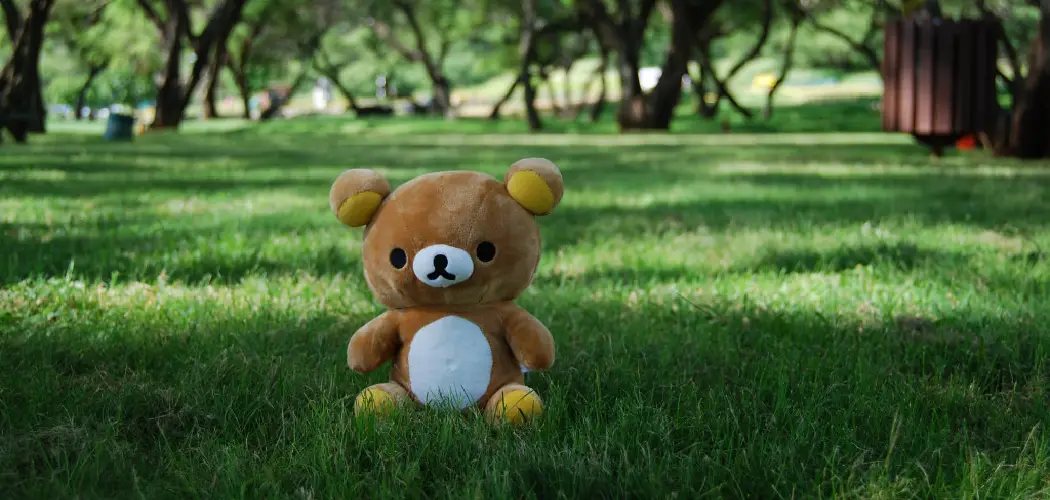Are you tired of walking around your lawn and feeling nothing but hardened soil beneath your feet? Do you wish that it was softer and more inviting when you went to enjoy the outdoors on a sunny day? If so, then this blog post is for you. Here we will discuss how to make lawn softer.
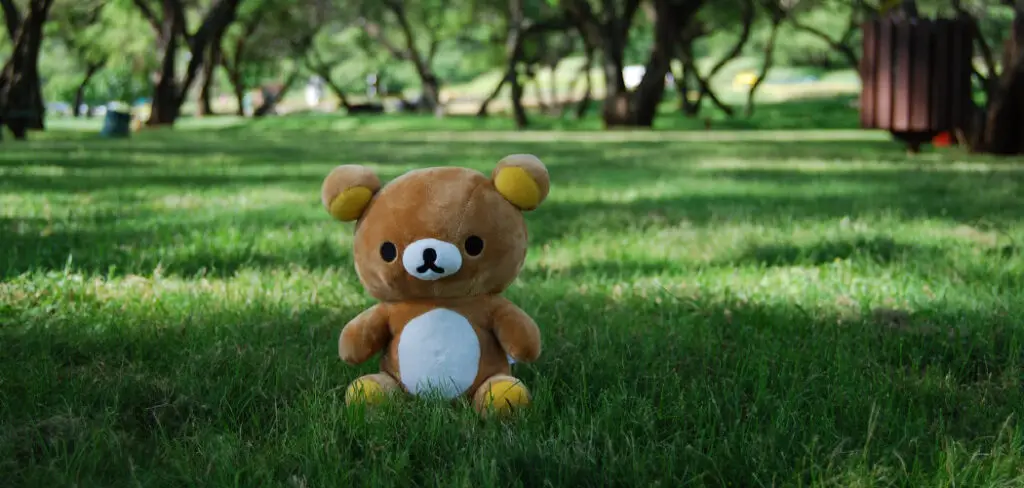
If you want to have a green, lush lawn that will keep your feet feeling comfortable every time you step out on it, then you’ll need to learn how to make your lawn softer. The truth is, there’s no one-size-fits-all solution when it comes to making sure that you have a wonderfully soft and inviting outdoor space for friends and family alike. However, with the right tips and tricks, it doesn’t have to be difficult either!
Why is It Important to Make Lawn Softer?
1 . To Prevent Injuries
A soft lawn is not only visually appealing, but it also serves a practical purpose. A hard and compacted lawn can lead to injuries such as sprains or strains when someone slips or falls on it. This is especially important for households with children who are more prone to running around and playing on the lawn. By making your lawn softer, you reduce the risk of injuries and create a safer environment for your family.

2 . To Improve Drainage
A lawn that is too hard and compacted can lead to poor drainage, causing water to accumulate on the surface. This can lead to not only an unhealthy lawn but also dangerous slip hazards. By making your lawn softer, you allow water to penetrate deeper into the soil, promoting better drainage and preventing water from pooling on the surface.
3 . To Promote Healthy Plant Growth
A hard and compacted lawn can also hinder the growth of grass and other plants. The roots of the plants need air, water, and nutrients to thrive, but hard soil makes it difficult for these elements to reach them. By making your lawn softer, you allow the roots to grow deeper and stronger, promoting healthier plant growth.
4 . To Increase Comfort
A soft lawn is not only safer but also more comfortable. You can enjoy leisure activities such as picnics or sunbathing on a soft lawn without worrying about discomfort from hard ground. A softer lawn also provides a cushion for children playing outside, making it a more enjoyable experience for them.
5 . To Enhance Aesthetic Appeal
A lawn is an integral part of your home’s exterior, and having a soft lawn can significantly enhance its aesthetic appeal. A soft lawn gives off a lush and inviting look, making your home appear more welcoming and well-maintained. Additionally, a soft lawn can also increase the value of your property, making it a worthwhile investment.
12 Ideas on How to Make Lawn Softer
1 . Aerate the Lawn Regularly
Aeration is an essential process for maintaining a healthy lawn. Compacted soil can make it difficult for water, air, and nutrients to reach the roots of the grass. Aerating your lawn helps to loosen up the soil and allows these vital elements to penetrate deep into the ground. This will not only make your lawn softer but also promote strong root growth and overall lawn health.
2 . Topdress with Compost
Topdressing your lawn with compost is another effective way to make it softer. Compost helps to add organic matter to the soil, which improves its structure and drainage. This ensures that the grassroots receives enough air and water, resulting in a healthier and softer lawn.
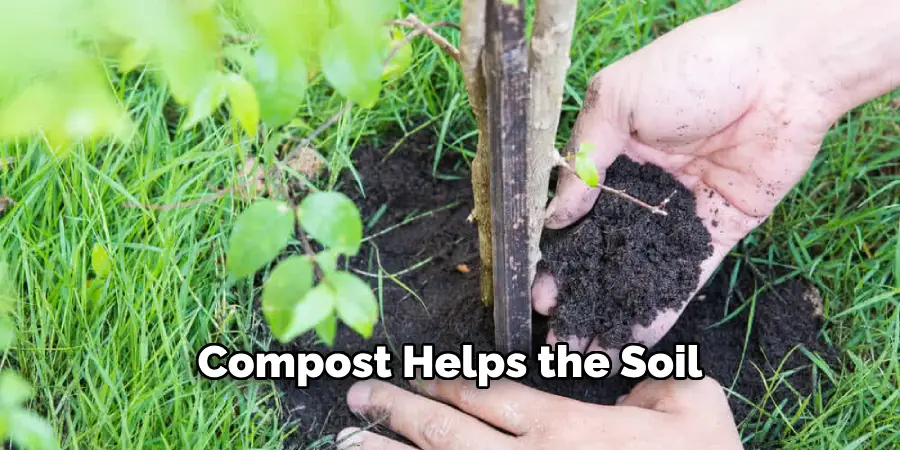
3 . Overseed with Soft Grass Varieties
Choosing the right grass variety for your lawn can make a big difference in how soft it feels underfoot. Some grass varieties, such as Bermuda and Zoysia, have tough, wiry blades that can make your lawn feel hard and prickly. On the other hand, fescue and bluegrass varieties have softer blades that can make your lawn feel plush and comfortable.
4 . Mow at the Right Height
Mowing your lawn too short can damage the grass and lead to a hard, compacted surface. It’s essential to mow at the right height for your grass type to maintain its health and softness. Generally, cool-season grasses should be mowed at a height of 2-3 inches, while warm-season grasses should be mowed at a height of 1-2 inches.
5 . Water Deeply and Infrequently
Watering your lawn deeply and infrequently is better than watering it lightly and frequently. This encourages the grassroots to grow deeper into the soil, making them more resilient and soft. It also prevents the surface layer of soil from becoming compacted, allowing for better water and nutrient absorption.
6 . Fertilize Regularly
Proper fertilization is crucial for maintaining a soft and healthy lawn. Fertilizer provides essential nutrients that promote strong root growth and overall lawn health. Be sure to follow the recommended fertilizer schedule for your specific grass type to ensure optimum results.
7 . Avoid Heavy Foot Traffic
Frequent heavy foot traffic can lead to a compacted lawn, making it feel hard and uncomfortable. If possible, try to limit foot traffic on your lawn to certain areas or use stepping stones in highly trafficked areas. This will help prevent soil compaction and keep your lawn feeling soft.
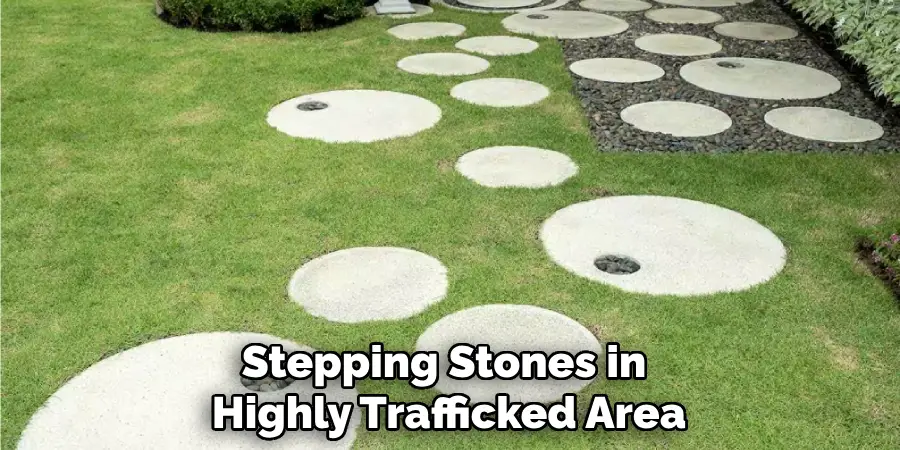
8 . Control Weeds and Pests
Weeds and pests can compete with your grass for nutrients, water, and space, leading to a weaker and less soft lawn. Regularly inspect your lawn for any signs of weeds or pests and take appropriate measures to control them.
9 . Test Your Soil pH
The ideal soil pH for most types of grass is between 6.0 and 7.0. If your soil pH is too acidic or alkaline, it can affect the health and softness of your lawn. Test your soil’s pH regularly and make any necessary adjustments to maintain a balanced pH level.
10 . Use Sand or Mulch in High-Traffic Areas
For areas of your lawn that experience heavy foot traffic, you may want to consider using sand or mulch instead of grass. These materials can withstand more wear and tear, preventing soil compaction and keeping your lawn feeling soft.
11 . Remove Thatch Buildup
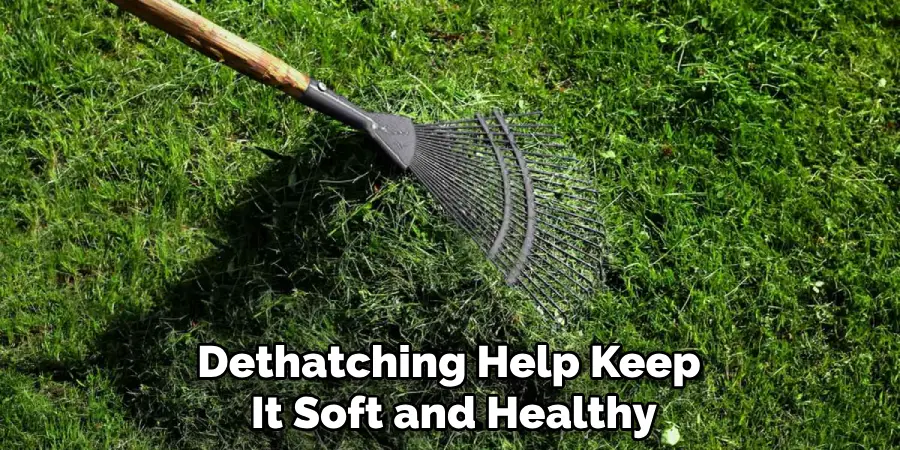
Thatch is a layer of dead grass, roots, and other organic material that accumulates between the soil surface and the base of the living grass blades. Excessive thatch buildup can prevent water, air, and nutrients from reaching the soil, resulting in a hard and unhealthy lawn. Regularly dethatching your lawn can help keep it soft and healthy.
12 . Use Softening Products
Finally, you can also use products specifically designed to soften lawns. These products often contain ingredients like calcium or magnesium that work to break up compacted soil and promote healthy grass growth. Be sure to follow the manufacturer’s instructions when using these products for best results.
Frequently Asked Questions
What Precautions Should I Keep in Mind When Trying to Make My Lawn Softer?
If you’re looking to make your lawn softer, there are a few things to keep in mind before starting the process. First and foremost, consider any potential risks or hazards that may arise while working on your lawn. This could include using chemicals or machinery that may pose a danger if not handled properly. It’s also important to consider the state of your lawn and any potential damage that may occur if not done correctly. Additionally, it’s always a good idea to do some research beforehand on the best methods for making your lawn softer.
This can help you avoid common mistakes and ensure that you achieve the desired results without causing any harm to your lawn. You may also want to consult with a professional landscaper or lawn care expert for their advice and guidance.

How Do I Determine the Best Method for Softening My Lawn?
The best method for making your lawn softer will depend on the current state of your lawn and your specific preferences. Some common techniques include aerating, topdressing, and overseeding. Each method has its own advantages and may work better for certain types of grass or soil conditions. It’s important to assess your lawn and determine which method will be most effective in achieving the desired results.
Are There Any Alternative Options for Making My Lawn Softer?
If you’re looking for alternative options to traditional methods of making your lawn softer, there are a few things you can try. One option is using organic fertilizers and soil amendments that can help improve the overall health and softness of your lawn. Another option is to switch to a different type of grass or consider using artificial turf, which requires less maintenance and may be softer than natural grass. However, it’s important to carefully research and weigh the pros and cons before making any significant changes to your lawn.
How Can I Maintain a Soft Lawn?
Once you have successfully made your lawn softer, it’s important to maintain its softness for long-term results. This includes regularly mowing and watering your lawn, as well as addressing any potential issues such as compacted soil or excessive thatch buildup.
It’s also recommended to continue using organic fertilizers and soil amendments to keep your lawn healthy and soft. Regular maintenance and proper care will ensure that your lawn remains soft and lush for years to come.
Overall, making a few changes and putting in some effort can go a long way in achieving a softer, healthier lawn that you can enjoy throughout the year. So don’t be afraid to experiment with different methods and techniques until you find what works best for your specific lawn.
Conclusion
With all the tips and tricks we’ve talked about how to make lawn softer, you should have a much better understanding of how to make your lawn softer. Taking steps such as proper watering, aerating, mowing correctly, and chemical treatments can make an immediate impact, but it may take several weeks or longer for your lawn to become truly soft.
By following this guide, you will be sure to enjoy a luxurious lawn, far more comfortable than before. Try out these ideas and see the results firsthand – certainly worth the effort for that lawn bliss! So don’t wait any longer – go ahead and start on your journey towards lusciously-soft grass!
About
Outdoor Fixes is a distinguished figure in the world of Diy design, with a decade of expertise creating innovative and sustainable Diy solutions.
His professional focus lies in merging traditional craftsmanship with modern manufacturing techniques,
fostering designs that are both practical and environmentally conscious. As the author of diy,
outdoorfixes delves into the art and science of outdoorfixes-making, inspiring artisans and industry professionals alike.
Education RMIT University
(Melbourne, Australia) Associate Degree in Design (Outdoor Fixes) Focus on sustainable design, industry-driven projects,
and practical craftsmanship. Gained hands-on experience with traditional and digital manufacturing tools, such as CAD and CNC software.
Nottingham Trent University
(United Kingdom) Bachelor’s in outdoorfixes.com and Product Design (Honors) Specialized in product design with a focus on blending creativity with production
techniques. Participated in industry projects, working with companies like John Lewis and Vitsoe to gain real-world insights.
Publications and Impact
In diy, Outdoor Fixes his insights on indoor design processes, materials, and strategies for efficient production.
His writing bridges the gap between artisan knowledge and modern industry needs, making it a must-read for both budding designers and seasoned professionals.

